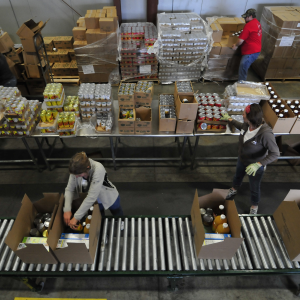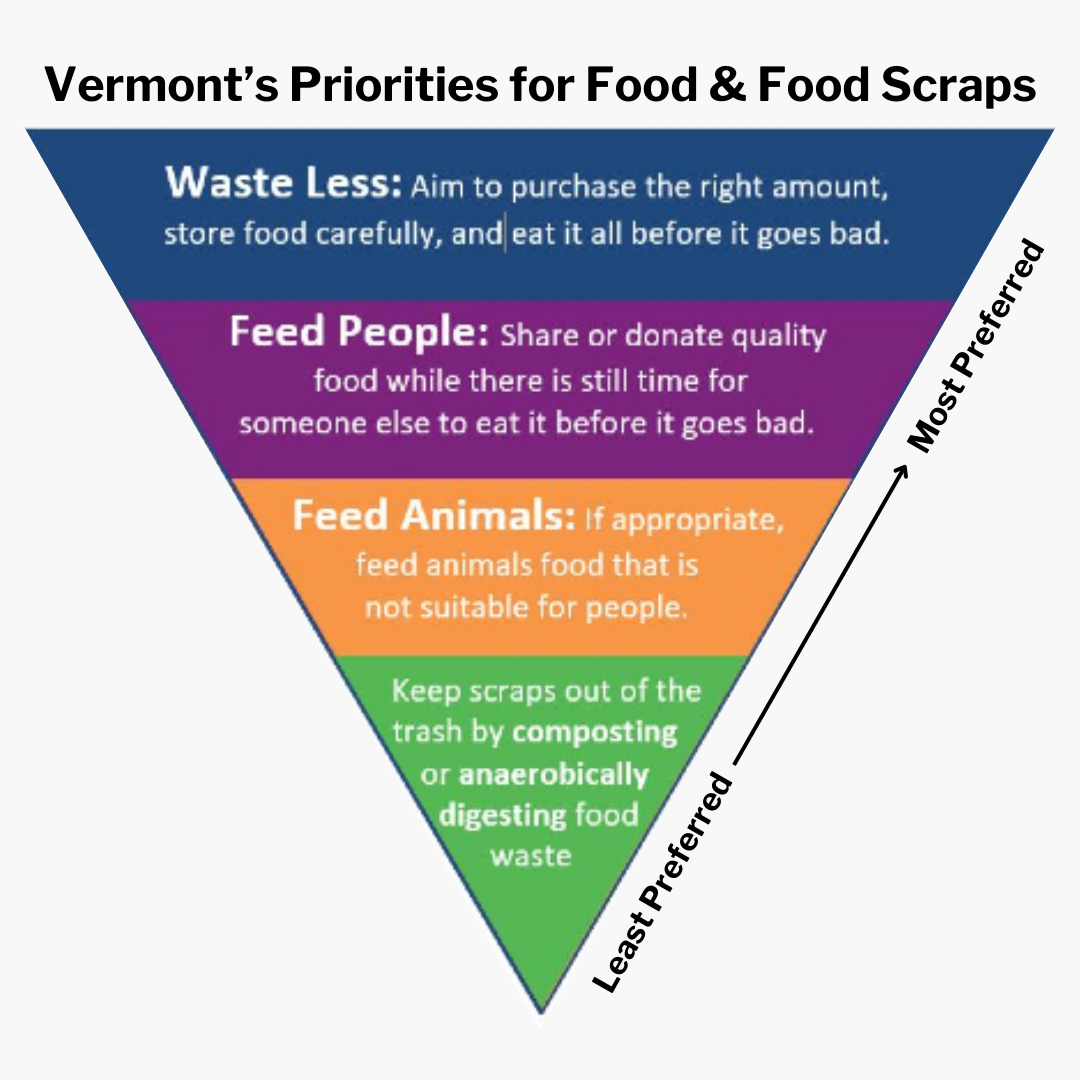Feed People Not Landfills

Vermont’s Universal Recycling law adopted a Food Recovery Hierarchy into law in 2012. Vermont is the first state in the nation to adopt priority management for surplus food.
The USEPA and USDA estimate that over 30% of the United States food supply is not eaten and becomes waste. USEPA and USDA have announced a national goal to reduce wasted food by 50% by 2030 in response to the impact of wasted food on the environment, food security, resource conservation, and climate change. Experts suggest that reducing food loss by 15% would provide enough food for more than 25 million Americans every year, helping to reduce incidences of food insecurity across the country.
Wasted food is the single largest component of landfilled municipal solid waste in Vermont and the US. Landfills are the third largest source of methane in the United States. Food waste creates an estimated 58% of landfill methane emissions.
"Let's feed people, not landfills. By reducing wasted food in landfills, we cut harmful methane emissions that fuel climate change, conserve our natural resources, and protect our planet for future generations" said EPA Administrator Gina McCarthy.




